Grade 1 Ankle Sprains: Understanding and Healing With Healthy Movement

Licensed Physical Therapist, PT, DPT // EW Motion Therapy Homewood
Ankle sprains are among the most common injuries, impacting countless individuals regardless of their level of physical activity. Grade 1 ankle sprains are mild but require appropriate attention and care to ensure a quick and effective recovery. A Grade 1 ankle sprain occurs when there is slight stretching and damage to the ankle’s ligaments, typically the anterior talofibular ligament. Unlike more severe sprains, Grade 1 sprains do not involve significant tearing and are characterized by mild pain, swelling, tenderness, and possible instability.
Click here to learn more about more severe ankle injuries.
Expedite healing: practical strategies and exercises
Protective measures such as wearing supportive shoes, ankle braces, or compression wraps can provide additional stability and reduce swelling as the ankle heals. The initial treatment for a Grade 1 ankle sprain follows the R.I.C.E. protocol: Rest, Ice, Compression, and Elevation. After the initial pain and swelling have subsided, you can introduce gentle, controlled exercises to maintain flexibility and prevent stiffness. Here are some exercises to safely mobilize your ankle. Remember, every individual's recovery journey is unique, and what works for one person may not be suitable for another. Listen to your body, and do not rush the healing process.
Seated ankle alphabet: 3 sets, 26 reps
- Begin by sitting upright on a table or bed with both legs hanging off the edge.
- Slowly trace the letters of the alphabet with the toe of one foot. You should be moving at your ankle.
- Make sure to keep your upper leg still as you move your foot.
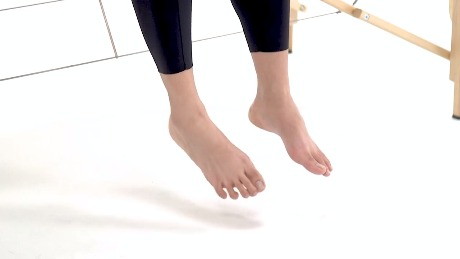
Seated ankle circles: 3 sets, 15 reps
- Begin by sitting upright on a table or bed with both legs hanging off the edge.
- Rotating at the ankle, slowly trace circles with your foot, first clockwise, then counter-clockwise.
- Make sure to keep your upper leg still as you move your foot.
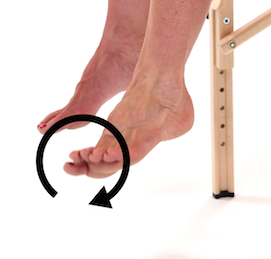
Seated heel raise: 3 sets, 10 reps
- Begin by sitting upright in a chair with your feet flat on the floor, positioned shoulder-width apart.
- Slowly raise both heels off the ground at the same time, then lower them down to the floor.
- Make sure to keep the balls of your feet in contact with the floor.
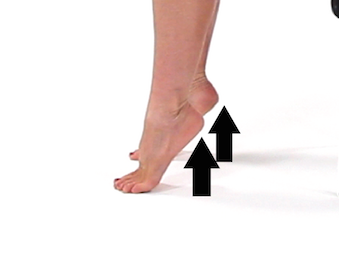
Seated toe raise: 3 sets, 10 reps
- Begin sitting upright on a chair with your feet flat on the floor.
- Raise your toes up off the floor.
- Make sure to keep your heels on the floor.
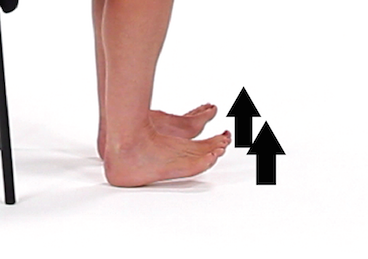
Standing gastroc stretch: 3 sets, hold for 60 seconds each time
- Begin in a standing position with your feet in a staggered stance, holding onto a stable surface for support.
- Keeping your back knee straight, push your hips forward. You will feel a stretch in the back of your lower leg.
- Make sure to keep both feet pointed straight forward and flat on the ground during the stretch.
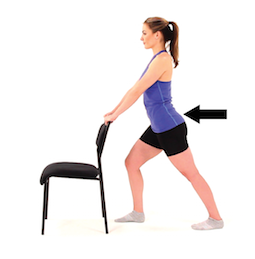
Single-leg stand on a foam pad: 3-5 sets, hold for 30 seconds each time
This exercise can be enhanced by using an unstable surface, such as a foam pad or a pillow, to further engage and strengthen the muscles around the ankle.
- Begin by attempting to stand on the injured leg, keeping your foot centered on the foam pad or pillow.
- Aim to maintain this position for 30 seconds, focusing on stabilizing your ankle. If you find it challenging initially, support yourself with a hand on a stable surface to prevent falling.
- Repeat, ensuring you do not push into pain.
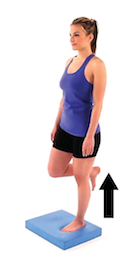
This activity not only aids in rehabilitating your ankle but also helps in regaining confidence in the injured limb's ability to support your body's weight and maintain balance, which is critical for a full recovery and prevention of future sprains.
These measures should not replace the gradual increase in regular physical activities based on your comfort and ability. If the above movements are too painful or you cannot put weight on your ankle, your injury may be more severe. If you continue to experience swelling, pain, and stiffness and feel that the ankle is not improving, consult a healthcare professional. They may recommend additional imaging or formal physical therapy.
.png)
